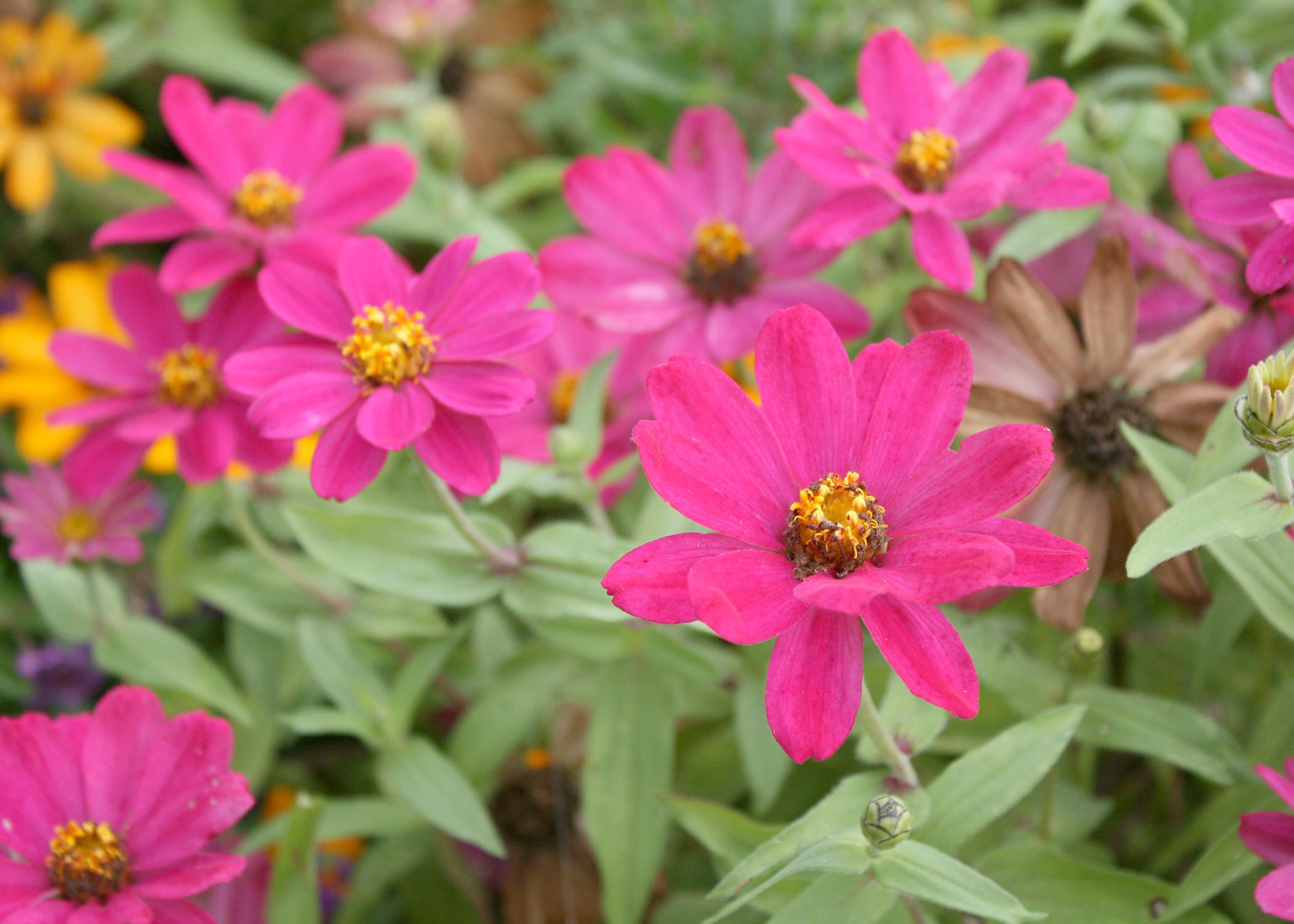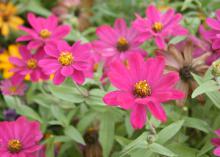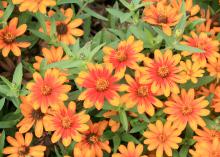Information Possibly Outdated
The information presented on this page was originally released on October 7, 2013. It may not be outdated, but please search our site for more current information. If you plan to quote or reference this information in a publication, please check with the Extension specialist or author before proceeding.
Let Zahara zinnia bloom in fall settings
I have to admit that I’m ready for this hot and really humid Mississippi summer to be over. Even though we are officially in the fall season, those high temps have been lingering into October.
But it seems we may have turned the corner towards lower temperatures. I even slept with the window open recently for the first time since I don’t know when. This means cool-season annuals will soon be showing up.
Instead of talking once again about how to use these plants in our landscapes and gardens, I’m going to reverse course and suggest that we not be too hasty planting pansies, violas, dianthus and snapdragons. Perhaps we need to give our summer annuals a chance for one more flash of color.
It turns out that gardeners aren’t the only ones who appreciate moderating temperatures. Hot weather can take a toll on summer-blooming plants, but lower fall temperatures can inspire flowering once again.
While visiting a couple of north Mississippi gardens in early October, I was reminded of how outstanding Zahara Cherry zinnias really are in the fall. If you have Zahara zinnias in your landscape beds, leave them alone for a few more weeks and see for yourself.
Zahara zinnias produce mounds of colorful flowers. They are robust, they have excellent branching that supports many flowers, and they have a natural resistance to powdery mildew.
I really like the new bicolor selection called Sunburst. The flowers open gold, and a red stripe is supposed to appear down the center of the petals. But in our hot summers, that stripe does not develop very well because of our warm nights. When cooler fall weather arrives, the red stripe thickens and becomes more pronounced.
Zahara zinnias are well suited for container gardening. You can extend their flowering season by bringing the containers inside when it gets cold. Always plant them in peat-based potting media. Monitor moisture, as containers dry out much quicker than in-ground landscape beds.
Amend landscape beds with 3 to 4 inches of a good-quality compost at spring planting to help ensure fall beds have adequate fertility. Raised beds result in superior plant growth and flowering by increasing the soil drainage.
Maintain a 2- to 3-inch layer of mulch to keep the soil warmer. This is opposite of what we use mulch for in the summer, but keeping the soil warmer encourages plants to keep producing beautiful flowers farther into the fall.
Even though Zahara zinnias tolerate droughty conditions, be sure to water them during extremely dry periods. Plants require less supplemental irrigation when lower temperatures arrive. If you do irrigate your fall Zahara zinnias, I recommend soaker hoses or other drip-type system as an efficient way to maintain soil moisture.
And even though it is the fall, don’t forget to feed your Zahara zinnias. Rather than using a granular, slow-release fertilizer, I recommend a water-soluble mixture as an easy way to keep the plants fed this fall.
So go ahead and enjoy the fall resurgence of your Zahara zinnias. There will be plenty of time later this fall to plant your cool-season flowering annuals.









